Industry Conversation with ID Label COO Gregg Schiltz
Q: Where do you see the materials handling market heading?
We expect to see the current trends continue: a shortage of available warehouse space, bottlenecks in the supply chain and increased demand from consumers.
These market trends were there pre-COVID, but they’ve been amplified. Consumers are buying more items online and no one expects that to pull back anytime soon.
For our industry, that means continued demand for space, materials handling equipment, software and barcoding. It demonstrates how integral our industry is to our economy. E-commerce doesn’t work without local storage and last-mile distribution.

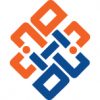 “Barcoding is a key part of a smart warehouse operation. The labels and signs pair with mobile scanning technology, warehouse management software and a well-planned layout and numbering scheme. Each part is reliant on the others to maximize operational efficiency.”
“Barcoding is a key part of a smart warehouse operation. The labels and signs pair with mobile scanning technology, warehouse management software and a well-planned layout and numbering scheme. Each part is reliant on the others to maximize operational efficiency.”
– Gregg Schiltz, ID Label
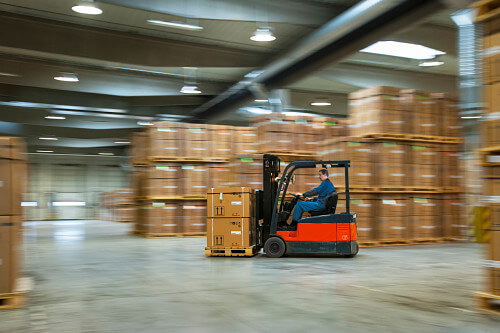
Q: Earlier in your career you worked in operations. How has that experience benefitted you now that you are with a supplier?
I think it’s been a vital foundation for me. With my prior experience, I know the challenges our customers face and how we can help address them as a custom manufacturer.
We have several employees who’ve had experience in warehouse and DC operations. We try to look for that when we recruit and hire. It’s part of how ID Label approaches the market. We train our team to have an empathetic attitude. It helps them listen to customers to understand their needs; then we can design a solution that works for their specific environments.
Q: In what ways can proper labeling create efficiencies within facilities?
Barcoding is a key part of a smart warehouse operation. The labels and signs pair with mobile scanning technology, warehouse management software and a well-planned layout and numbering scheme. Each part is reliant on the others to maximize operational efficiency. At the end of the day, the role of barcoding is to allow data capture within inventory management software. That software needs our labeling products and vice versa.
The result is better inventory management, traceability of parts and finished goods, faster picking and fulfillment, speed, velocity, improved worker movement and productivity—all the above.
It’s a little like the postal system. Every day they deliver millions of pieces of mail because there is a distribution system in place with individual locations—addresses—so mail can be delivered from point a to b in the most efficient manner.
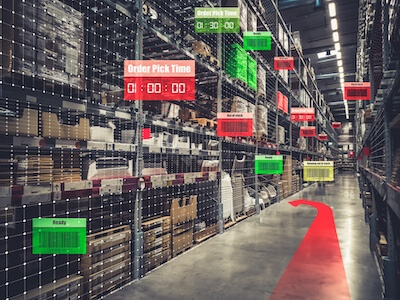
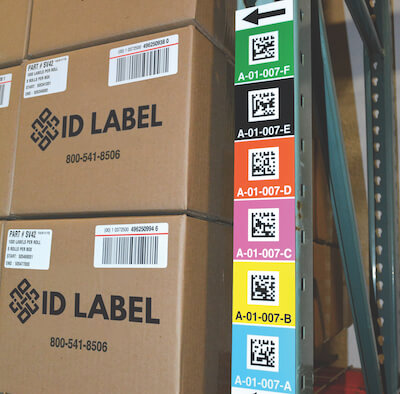
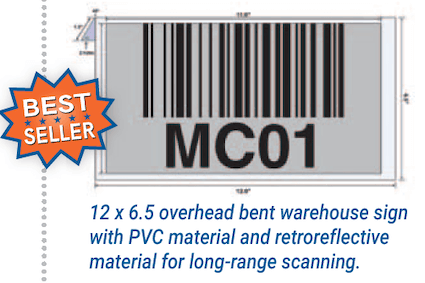
Q: How are new IT technologies impacting your labeling products and the tracking of inventory in general?
New technologies go hand in hand with advances in labeling products. Today’s mobile imagers, for instance, are more sophisticated, which means they can scan from longer ranges at increased scan read rates. That allows manufacturers like ID Label to develop products that take advantage of these capabilities.
Our overhead signs feature retroreflective graphics. These materials enable optimal scan accuracy from long distances—typically 50 feet or more. This is due to the intensity of the light reflecting off the barcode as it’s returned to the mobile scanning device. We also use this material in newer facilities that feature high bay racking intended to accommodate more units and SKUs. Retro rack bay labeling on the higher levels accommodates accurate scanning from the ground.
Newer imaging technology can also read two-dimensional barcodes. Unlike typical linear barcodes, 2D barcodes can store thousands of characters of information. That’s because they encode data vertically and horizontally. They can contain information like product name, serial number, lot number, date of arrival, date to be shipped and more. A single scan captures all the pertinent information, which is then easily accessible in the facility’s inventory management software.
On the label manufacturing side, newer technology advancements allow us to install in-line verification systems on our presses, so we’re able to monitor barcode scan quality and read rates in real time as labels are produced. This helps us produce the highest quality product, which means happy customers.
 “We’ve seen materials and adhesives progress dramatically over the past 10 years or so. The focus now is on designing custom solutions for specific applications and environments featuring more durable poly materials and advanced adhesives. Barcode labeling today needs to perform in extreme cold and heat, in outdoor settings with extended exposure to ultraviolet rays, in challenging manufacturing environments—you name it.”
“We’ve seen materials and adhesives progress dramatically over the past 10 years or so. The focus now is on designing custom solutions for specific applications and environments featuring more durable poly materials and advanced adhesives. Barcode labeling today needs to perform in extreme cold and heat, in outdoor settings with extended exposure to ultraviolet rays, in challenging manufacturing environments—you name it.”
– Gregg Schiltz, ID Label
Q: What is the most popular facility sign that you produce and how is it being used?
The most common sign is a 16 x 11 inch bent PVC sign. These are typically installed above bulk storage areas that contain large, bulky items or pallets of fast-moving products.
The signs commonly feature a retroreflective graphic—a barcode and human-readable letters and numbers. Workers in lift trucks can easily drop or pick their load and scan the overhead sign to log it into the WMS without leaving the forklift. Just another way barcoding drives efficiency and speed.
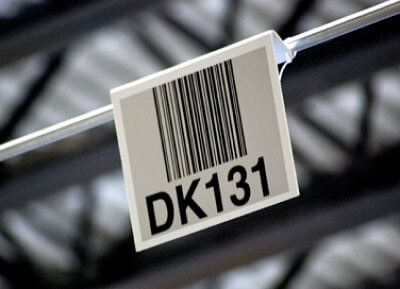
Q: What is the one piece of advice you would give to facility managers about their labelling programs?
Based on my experience, labeling is typically one of the last items that warehouse managers think of. This can leave them scrambling to find product if there hasn’t been enough time built into their planning. The last thing you want to see is a multimillion-dollar facility miss its go-live date due to lack of location labels.
My advice: consult with your labeling partner at the start of any project. With today’s supply chain challenges, that’s more important than ever.
Hand in hand with that is mapping your facility for efficiency. Signs and labels tell the story of how to navigate a warehouse, and they communicate information to your staff. Most warehouse location IDs consist of four to six fields that reflect the layout and organization of a facility. This nomenclature is a shorthand language to help workers quickly know where products are to be stored or picked. And that logic is also built into the warehouse’s inventory management software.
Beyond that, be sure to use quality products that perform in your environment, whether that’s ambient or cooler/freezer settings. If the location labels are easily damaged, smudged, or peel and fall, the result is lost efficiency and potential errors from manual data entry.
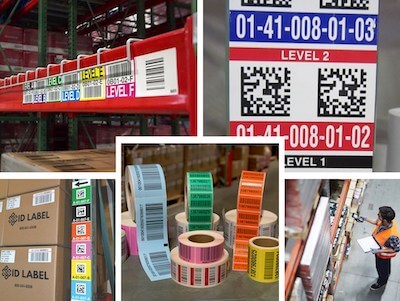
Q: What is the most significant change in labeling you have seen during your time in the industry?
We’ve seen materials and adhesives progress dramatically over the past 10 years or so. The industry has moved from using general all-purpose adhesives and paper face sheets for everything. The focus now is on designing custom solutions for specific applications and environments featuring more durable poly materials and advanced adhesives. Barcode labeling today needs to perform in extreme cold and heat, in outdoor settings with extended exposure to ultraviolet rays, in challenging manufacturing environments—you name it.
For instance, with the growing demand for cold storage facilities, labeling has had to adapt. We developed Arctic Xtreme™ cold storage labels to meet this demand. They perform extremely well in cold, wet and subzero conditions—up to -65F. And they can be installed in temperatures as low as -20F.
Repositionable labels are another advancement. Our Clean Release™ labels adhere tightly to warehouse racking and shelving but are easily removable and reusable without any adhesive residue left behind. This supports our customers’ need for greater flexibility in slotting and reconfiguring their locations to meet seasonal demands or facility expansion.
As our customers’ needs change, we’ll be there with innovative barcoding solutions. That’s the advantage of being a custom manufacturer. There’s no “one size fits all” in our world.
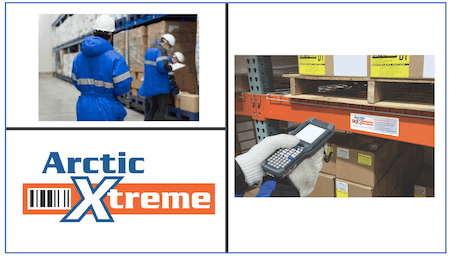
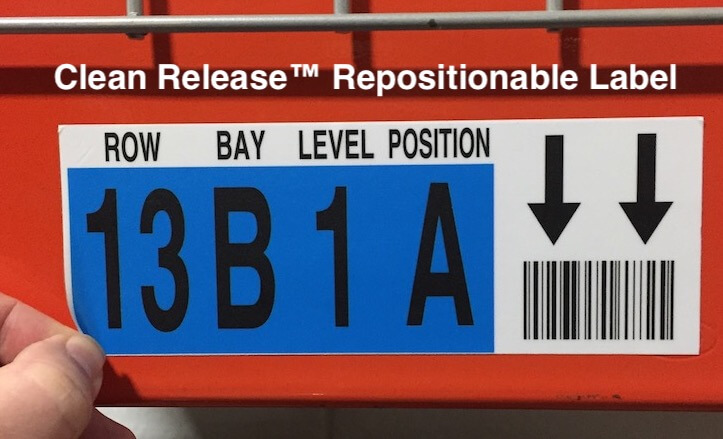

The ID Label Advantage
ID Label manufactures extremely durable warehouse rack and bin location labels. Our materials have been tested and used in warehouse operations around the globe.
We also provide warehouse signage and turnkey nationwide installation services to provide a complete solution to our many clients who rely on us for all their warehousing needs.
Interested in learning more? Contact us today.